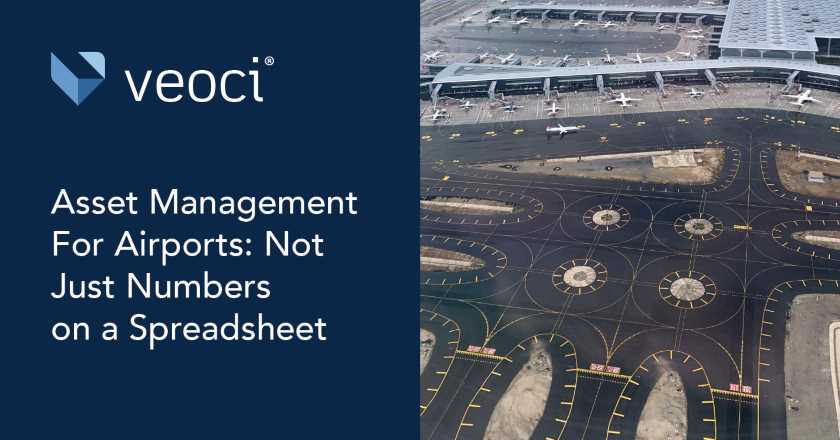No, we aren’t about to tell you all about how you should be managing your financial portfolio, that’s another type of asset management.
Nowadays, assets are no longer confined to the accounting department. Airport operations systems rely on airport infrastructure and resources being up, running, and maintained, which means managing these assets is nothing short of critical. Airports that have implemented asset management solutions have turned their once reactive approach to a proactive one, saving time and money while increasing employee, customer, and passenger satisfaction. Airport operations system ensures the experience runs as smoothly as possible.
Why Asset Management?
Asset management bleeds into almost every aspect of an airport. Not just one airport department solely benefits from implementing an asset management strategy. But like with any sort of change, there can be push back. Let’s dive into some of the key benefits a solution can bring.
Track Assets
This point seems obvious. Having a fully fledged asset management solution allows for your airport to have complete situational awareness regarding all assets. Tracking your assets within one platform allows you to keep information centralized and individual asset data consolidating, simplifying internal audits; a pre-programmed auto trail streamlining your review.
Airports are especially busy. With so many moving parts and with functions being so time sensitive, giving your employees the ability to see the location and status of what they need will help with their daily operations.
Manage Resources
Employees can only do their jobs when they have the appropriate resources available to them. Having an accurate representation of the pieces of equipment available to every department and having access to agile inventory records helps managers make purchasing and assignment decisions.
Physical assets last longer when given the right care. Regularly scheduled maintenance can be uploaded and automated, removing the possibility for machinery and vehicles missing oil changes, software updates, and more. Using an aviation asset management solution helps you get the most out of all of your long-term investments.
Meet Expectations
Having asset data and management processes tracked and streamlined is nice, but it’s also a standard internationally and nationally. Optimally and sustainably managing assets allows your airport to meet and maintain compliance.
Regulatory bodies aren’t the only ones to keep happy. Lessees and passengers alike benefit from your operations running smoothly: planes being on time, luggage not being lost, terminals and gates being appropriately maintained, just to name a few. Though a seemingly small piece of the puzzle, having an aviation asset management strategy makes your airport a better place to work and a more enjoyable place to visit.
So What Should Asset Management Track?
In short, your solution should be tracking everything.
When it comes to thinking about asset management within airports, many immediately think of the items within the airfield. But the truth is, that an asset management solution allows for the management of all airport infrastructure and assets. The solution not only tracks individual assets but it also aids in facilitating the processes related to their maintenance.
For instance, runway and roadway pavement health, any and all barriers, flags, lights, wayfinding signage and wildlife depredation should be included. Vehicle care, assignment and storage can all be taken care of within the solution, as well as fuel farm replenishment and purchasing.
Gate management, scheduling of preventative maintenance, work orders, these can also be easily managed from the solution. Asset management takes all of these small pieces and connects them and their related departments together, creating interoperability to a level that was once nonexistent.
Seeing how assets move through operations and functions utilize them (plus any additional data) is the type of proactive approach that airports should begin to take. Though asset management is one solution, it is highly intertwined with other operations.
How Can I Expand Asset Management?
Understanding what asset management is and what it means for airports specifically is an important and operation-altering lesson. Getting started with an asset management solution, however, can feel incredibly overwhelming, and buy-in from other departments can be hard to come by.
Stay tuned for another blog installment dedicated to exploring the different motivations decision makers might have when it comes to asset management, as well as the differences that must be acknowledged of airports ranging in size.
In the meantime, Veoci will be attending the 2022 ACI conference in Minneapolis. Be sure to stop by booth 1332 and chat with our team members, maybe even ask about how we can help transform your asset management strategy.








